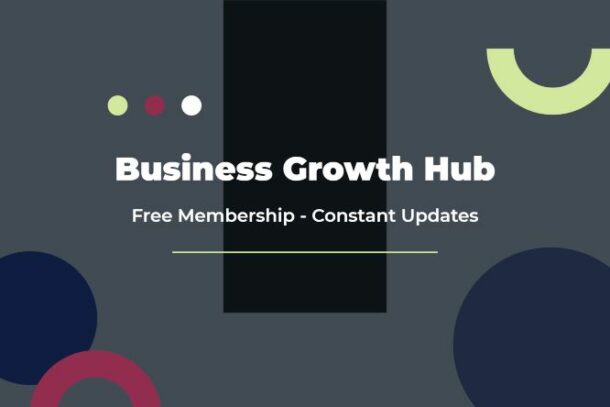What is Affiliate Marketing
Thousands of companies around the globe have increased their sales and reduced their advertising costs to the minimum utilizing the powerful model of Affiliate Marketing.
Thousands of entrepreneurs launched online businesses without having to own products or worry about customer support
Classic/Traditional Advertising Methods
Before we analyze the Affiliate Marketing model, it’s important to remember the classic advertising methods that all companies used to apply but still, a large number of companies continue to apply to this day.
Traditional advertising methods:
- Printed material
- Newspapers
- Radio
- Television
- Road signs
- Micro-materials
- Illuminate and other signs
- Exhibitions
- Appear on materials in other companies
- Advertisements in public spaces, road networks inside and outside cities, in stores as sponsors
- Internet (usually a website or social media profiles)
Of course, these advertising methods cost a lot of money, in many cases, companies spend thousands of dollars. And the high cost is not the only downside.
With these methods, it’s too difficult to estimate their overall and final performance.
Have the sales of the advertising company been increased? Which of these methods produced the best results? Has the business managed to cover the advertising costs of a particular channel, and if so, how much? was any of these methods ineffective so as not to repeat as it is? are some of the reasonable questions that arise.
High risk, high cost, difficult and inaccurate measurements, doubts.
The Affiliate Marketing Model
This model is widely used in many countries such as USA, Canada, Europe, Russia, India, China, Japan, Australia, Brazil and more.
What is Affiliate Marketing?
Affiliate marketing is a kind of performance marketing in which promotion/advertising of products and services takes place exclusively on the internet.
Let’s consider the following marketing/advertising plan of products and services
a) The company (advertiser) who wants to advertise its products and services or even a part of them online through the affiliate marketing model
b) The affiliate (partner or publisher) who undertakes the promotion of the products in a variety of ways and methods on the internet (to be expanded below).
c) the affiliate network acting as an intermediary between an advertiser and an affiliate. Publishers are free to subscribe to these networks with the aim of identifying promotional products to promote them. These networks offer a wide variety of products from thousands of companies in many market segments and there are thousands of publishers who can promote these products.
Companies, in most cases, are required to pay an entry fee to the network, which can range from $20, $50, $100 to $200 or a little more, but there are affiliate networks who do not ask for any fees. This fee is paid only once or once a year, and companies get access to thousands of publishers/affiliates who can show interest in and get sales for the companies’ products.
Publishers are usually eligible to promote any company they want once they join an affiliate network, but there are networks where publishers have to apply for every company they want to co-operate with separately, and these applications are reviewed by the companies.
*In some cases, in the role of the network, we have affiliate managers who act as mediums between brands and publishers, usually organizing product launches or similar promotions. The affiliate manager is responsible for recruiting top-publishers to increase conversions for brands and to help publishers on their promotions by delivering exclusive material and by offering incentives and other methods. The fee of the manager can either be a percentage of sales or a predefined fee.
d) the final consumer (and/or visitor)
The company has the ability to avoid the publishers’ network and create an in-house affiliate program. In this case, the advertised company will likely have a harder time identifying affiliates on its own, but it can also choose to partner with affiliate managers who have their own circle of affiliates/partners (more on the topic in the next chapter).
The company that owns the final product will pay commissions to the affiliates if the customer was driven to the company by the unique marketing actions of the affiliate. This is a modern way of marketing that both companies and affiliates get benefited.
The company is benefiting from the “pay-per-performance model structure” meaning they don’t have to pay anything for advertising. When sales occur by the marketing efforts of the affiliates who take care of the advertising on their own, they pay affiliate commissions. The affiliates don’t have to spend a fortune on product development, the only thing they need to do is promote those products on their websites.
Nowadays, the simplified process of website creation resulted in open opportunities for writers, website owners, bloggers, marketers, owners of forums or online communities and various kind entrepreneurs to participate in the affiliate marketing model.

How Does Affiliate Marketing Work?
The advertised company has a big advantage as it has to pay publishers only for customers who will visit their website and take an action (that is predefined).
Any other possible customers’ exposure to promotional material of the company’s products through the actions of the publishers does not entail any costs for the company or revenue for the publishers/affiliates.
However, if potential customers visit the company’s website and take action, such as the purchase of its products, then the company is asked to pay publishers (in the case of selling products or services a percentage of profits).
Let me note here that the final price of the product does not change and of course, it is for the benefit of the final consumer. That is, publishers, advertise their products at the price that the companies sell. And the company is asked to sacrifice a small percentage of its profits but avoids the colossal burden of advertising and promotional costs.
In this way, the company pays ONLY when a sale or other action is reached, in other words, the desired result.
The desired result is not always selling products or services.
It may be some other action on the part of customers
ie…the record of the customers in the email listings or newsletters of the company as a possible prospective buyer that showed interest, and which gives the company the ability to re-market its products, either current or future, to these prospective customers. Other actions include: customers sign up a form, give their personal data, download a software or any other digital content, and more.
There are many other forms of final actions that yield the “desired result” that generates revenue for affiliates and expense for the advertised company (to which we will extend to the next chapter)
Technical Details
Publishers/affiliates place special links on their blog’s and website’s content, such as blog posts, pages, banners, anywhere on their websites and on other mediums as well, like social media, forums, networks, communities, messengers, emails, videos, podcasts.
When someone clicks those links they get redirected to a merchant’s (company’s) website. The moment a visitor clicks an affiliate link a special cookie is being placed on his/her computer (this cookie tells the company that the visitor is being sent through the specified publisher’s/affiliate’s unique affiliate link). Now the merchant has to close a deal so that the publisher/affiliate can earn a commission based on sales.
Affiliates don’t have to worry about customer service, delivery, or support. This method brings immediate results, as long as affiliates have traffic.
The only concern is that the cookie might expire. Other companies place cookies that last 24 hours, like Amazon, other companies use 30-day cookies, other companies use cookies that last a lifetime.
Amazon uses 24-hour cookies but they will pay their affiliates commissions on any product the redirected customer may purchase during those 24 hours.
ie…a publisher has written a review of a company’s product. A visitor finds the affiliate’s website in the search engines, read their personal review and gets redirected to Amazon. He buys the company’s product or service, and then he finds another attractive offer, something totally irrelevant, like a TV, or a home theater, it does not matter. If they buy the TV set the same day, affiliates get commissions for the sale of the TV as well. Many companies use the same exact principle.
This is how Amazon became an empire, by letting promoters advertise their products for commissions.
What the Affiliate Marketing Model Looks Like?
It’s like owning a supermarket. How do supermarkets operate? They buy products from various sources, they promote those products on the shelves, and customers buy those products at a higher price than the price the supermarket owner paid to own them. It’s the exact same principle, the only difference is in pricing.
Along with those products from external resources supermarkets may sell their own products, usually in co-operation with manufacturers closing exclusive production deals, where the manufacturers produce goodies and package them using the supermarket branded logo.
How do bookstores operate? The same principle, you buy books from publishing companies to re-sell them.
How do gas stations operate? The same principle, you don’t produce gas or oil. You re-sell it.
The difference is in the pricing model and that publishers/affiliates don’t have to buy the products, they just promote them instantly. With affiliate marketing, you promote products for commissions and the final price of the product remains the same. The companies lose a percentage of the profit but they manage to sell more products without paying for advertising costs up-front. The retail customers enjoy the same price and quality.
Advantages
As you probably understand, this system has tremendous benefits for all parties involved, for the advertised companies, for publishers, for publisher networks, but also for end-users.
Companies
The company pays only in cases of final sales or other desired predefined results. It does not pay without results. The desired results thanks to new technologies and the internet are absolutely measurable
Imagine a company having to hire 100 sales representatives to advertise its products. How would they compensate them? Could they be able to ensure them? Probably hard, if not impossible. However, with this system, hundreds of publishers promote their products without the company being forced to pay in advance
Publishers
For publishers, the system is overly flexible and lucrative, although they are only paid for successful customer visits on merchants’ websites and for desired results.
Publishers take on the workload and cost of the advertising campaign without being paid in advance but they have the ability to promote multiple products from multiple companies at once. If they fail to achieve the desired result they simply don’t get paid.
Publishers, the vast majority of which have their own blogs, websites, and social profiles, advertise multiple products on their online properties.
However, the content of publishers’ sites is accessible to potential customers all days of the year, at all times. Imagine these online properties as uninterrupted operations with minimum maintenance costs and without the need for the publishers to be present.
In this way, affiliates in a very short space of time manage to promote dozens, hundreds, or even thousands of different products at the same time without additional workload and without being in their workplace. That is publishers, complete an advertising campaign for a product that can earn them profit for years. And this is achieved because of the technologies, the Internet, and this powerful model.
Because the promotional content on their sites remains accessible without interruptions at all times.
Publishers also do not undertake customer service from the time of sale. This is the duty of the advertised company.
Publishers, of course, can operate either personally as private individuals or as advertising agencies that engage in the advertising of the businesses concerned.
An issuer can offer its services at the same time as an affiliate and as an advertising agency. As an affiliate, it promotes products with the model we just examined, and as an advertising company it creates campaigns or builds blogs/sites, social media pages/business profiles for the advertised companies. In these cases, the publisher will be paid directly by the companies without waiting for the desired result (traditional advertising).
This website currently works both as an affiliate and as an advertising company at the same time
The Web Market Support company started as an affiliate/publisher in early 2015. Since 2017, it has been operating as an independent advertising agency.
In this blog, WMS advertises hundreds of products continuously without the need for additional promotional activities for the products already being promoted, for the most part. In some cases, however, upgrading of promotional materials is necessary.
Affiliate Networks
On the other hand, publisher networks undertake transaction management, offer publishers and advertisers business and management tools to monitor promotions and receive an entry fee from businesses and a percentage of sales
Consumers
The final consumers end up enjoying the same product at the same price with the same guarantees.
Related:
That’s it, another article has finished, here on Web Market Support. In the next chapter, we will expand on some historical data that will help us better understand the benefits of this very flexible advertising model and maybe we can come close to a few predictions.
I am waiting for your comments and thoughts

Tasos Perte Tzortzis
Business Organisation & Administration, Marketing Consultant, Creator of the "7 Ideals" Methodology
Although doing traditional business offline since 1992, I fell in love with online marketing in late 2014 and have helped hundreds of brands sell more of their products and services. Founder of WebMarketSupport, Muvimag, Summer Dream.
Reading, arts, science, chess, coffee, tea, swimming, Audi, and family comes first.
Affiliate Marketing
- Affiliate marketing index (informational articles, how-to's, guides, resources, networks, forums, and more)
- What is affiliate marketing
- Affiliate marketing history
- Affiliate marketing key benefits
- Affiliate marketing pricing models
- Affiliate marketing statistics
-
Affiliate Websites – Examples and Different Types – Infographic
- How to make money with affiliate marketing
- Affiliate/business-related forums
- Advertising/Affiliate networks (AZ directory and overviews)
- Overcoming fear of writing - inspirational quotes for success
- The compounding effect in affiliate marketing
We Teach
Marketing & Business
Live on Zoom
Your host: Tasos Perte Tzortzis
Schedule an interview so we can evaluate where you are right now, your needs and goals, and we'll give you a detailed analysis of how the workshops work
*30-Day Free Trial
Next Chapter
Affiliate Marketing Resources
The ultimate guide to help you master every aspect of this business model



0 Comments